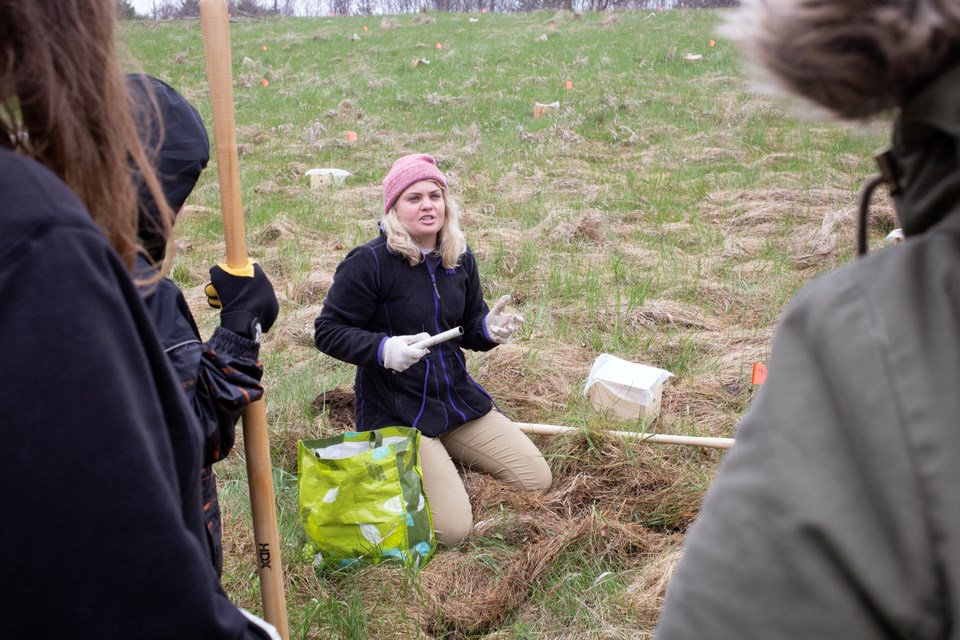Empty boxes being buried in areas like the Arboretum and Guelph Lake Conservation Area will help researchers to learn more about the bumble bees they hope will inhabit them.
On Friday, Hayley Tompkins and about a dozen volunteers dug holes for 60 bee boxes at Guelph Lake and hung another 60 in the park’s trees.
“I put them out and hopefully the bees come. I visit the boxes throughout the spring and the summer and monitor them for signs of occupation, to learn about where they are nesting and why and hopefully use that in conservation programs to protect species at risk,” said Tompkins, who is currently enrolled in U of G’s Master of Science and Environmental Science program.
Even after 200 years of research, Tompkins said scientists know very little about bumble bee nesting habits.
One out of every three bites of food you take is grown thanks to the help of a pollinator, said Tompkins.
“If we don’t know where they are nesting, then how do we help protect their habitats?” she said.
In addition to the 120 boxes at Guelph Lake, Tompkins has also left some at sites like the Arboretum. In total, about 400 boxes have been put out this year. In its first year in 2017, just 14 boxes were left out at Guelph Lake.
Tompkins said it is thanks to partnerships with organizations like Grand River Conservation Authority — which oversees Guelph Lake Conservation Area — that make it possible to continue her research.
The boxes are provided by Wildlife Preservation Canada, a non-profit organization that seeks to save animals at risk from extinction by providing hands-on care.
“I joined a few years ago to work in their bumble bee recovery program and this nest box project was something we started as a pilot,” said Tompkins.
Erin Burton, an Environmental Science student at U of G, came out to volunteer by digging holes and installing the bee boxes.
“I have always been interested in pollinators,” said Burton.
The boxes have been installed on a grassy hill near the beach at Guelph Lake Conservation Area. Nearby flowering raspberries, milkweed and a Lindon Tree will provide the bees with lots to do, said Tompkins.
“It will not really be used in terms of recreation, but it provides an excellent habitat — there are tons of flowers in this spot, so a really good spot for pollen and nectar foraging,” she said. “They let the dandelions grow in here as well, which is important spring food for bees.”
Tompkins said she has had some surprises when she opens up the boxes in the fall, after the bees have abandoned them. She has found snakes, salamanders, ants, wasps and mice using the boxes as a home.
Last year she found the temporary home of a leaf-cutter bee in the middle of one of the boxes. I looks kind of like a leafy cigar.
“That was their nest. They are a solitary bee, so instead of living in a colony with a queen and workers, they will lay their eggs and put some pollen in it and lay more eggs and more pollen and they emerge from there,” said Tomkins.
“You go into this with the intention of studying bumble bees and you get all of this other information other than what you were looking for, and that is part of the nature of field work — you don’t really know what to expect,” said Tompkins.
